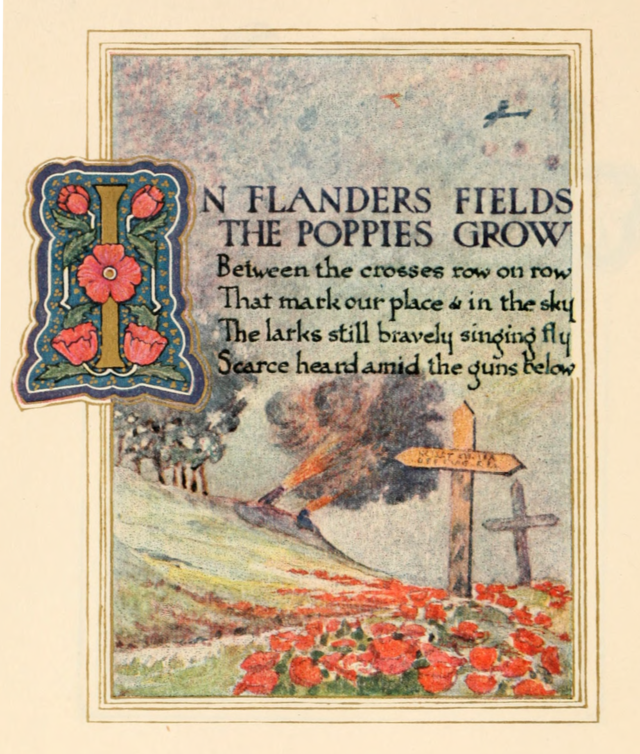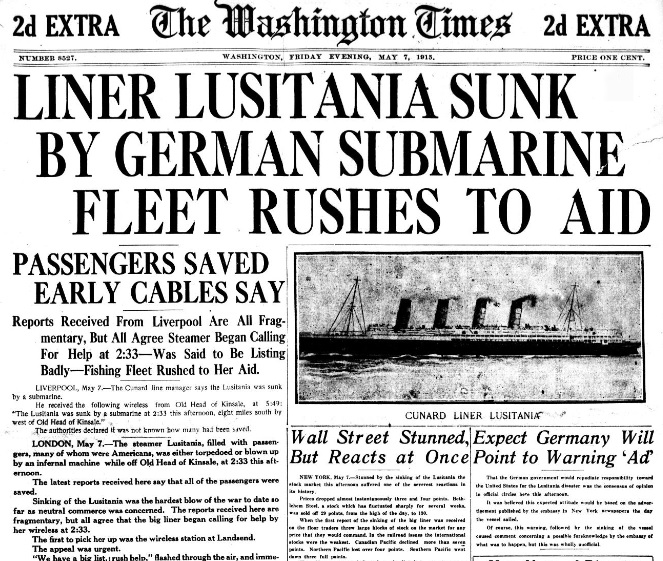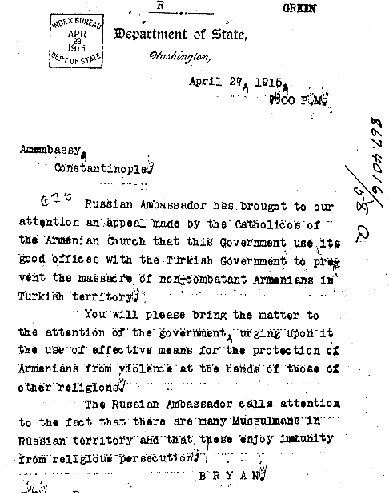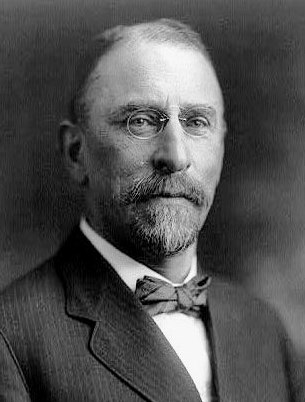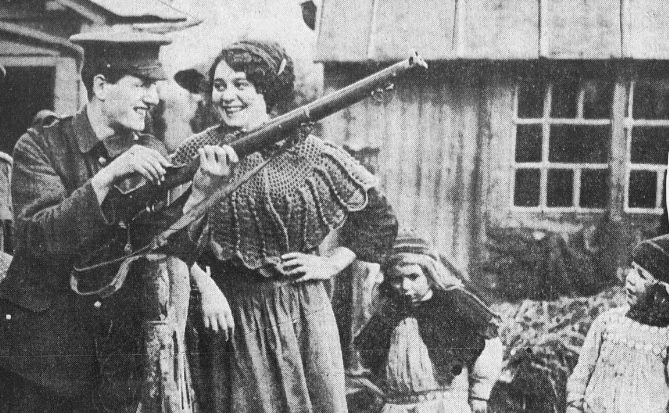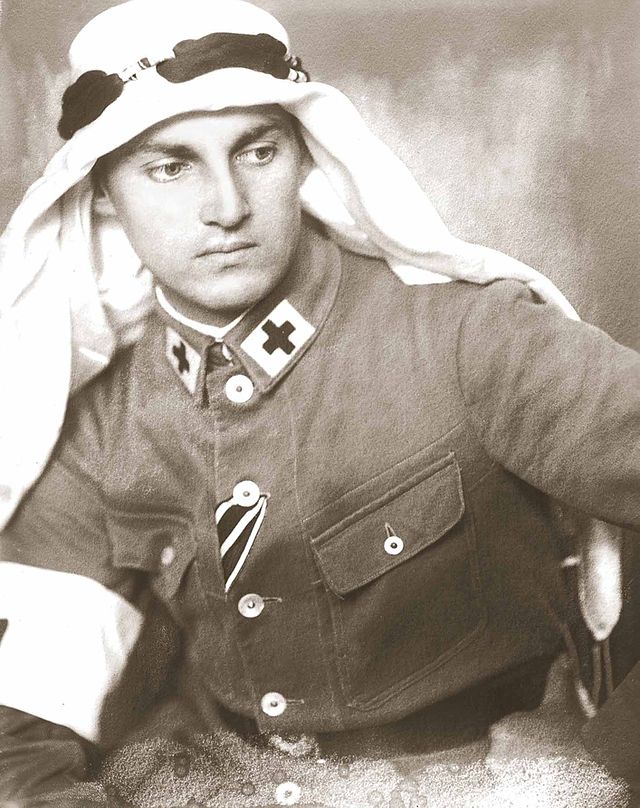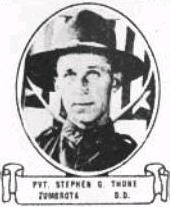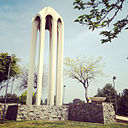
Armenian Genocide Martyrs Monument, Montebello, California, by ai pohaku (http://www.flickr.com/photos/oceanblue/7030149861/) [CC BY 2.0], via Wikimedia Commons
Then they will deliver you to tribulation, and will kill you, and you will be hated by all nations because of My name. – Matthew 24:9
The association of Mount Ararat and Noah, the staunch Christians who were massacred periodically by the Mohammedan Turks, and the Sunday School collections over fifty years for alleviating their miseries—all cumulate to impress the name Armenia on the front of the American mind. — Herbert Hoover.
The first genocide of the twentieth century struck your own Armenian people, the first Christian nation, as well as Catholic and Orthodox Syrians, Assyrians, Chaldeans and Greeks. Bishops and priests, religious, women and men, the elderly and even defenceless children and the infirm were murdered.
The remaining two were perpetrated by Nazism and Stalinism. And more recently there have been other mass killings, like those in Cambodia, Rwanda, Burundi and Bosnia. It seems that humanity is incapable of putting a halt to the shedding of innocent blood. It seems that the enthusiasm generated at the end of the Second World War has dissipated and is now disappearing. It seems that the human family has refused to learn from its mistakes caused by the law of terror, so that today too there are those who attempt to eliminate others with the help of a few and with the complicit silence of others who simply stand by. We have not yet learned that “war is madness”, “senseless slaughter”
—Pope Francis
Today is the 100th Anniversary of the start of the Armenian Genocide. A hundred years ago, hundreds of Armenian intellectuals were rounded up in Constantinople and executed. Over the next year, as many as 1.5 million Armenians would die at the hands of the Ottoman Turks. The genocide is being remembered today, but what is lost in many of the accounts is the fact that it was the Christian Martyrdom of more than a million saints.
The Armenian Genocide was very much a case of Christian martyrdom. In some sense, Armenia can be thought of as the first Christian nation, having been converted by St. Gregory the Illuminator in 301 A.D. But during St. Gregory’s evangelization of the country, he encountered many Christians. It is believed that three of Christ’s disciples, Thaddeus, Bartholomew, and Jude, successfully preached the Gospel and were martyred there. Indeed, there’s even one tradition (probably apocryphal) that holds that the “there were some Greeks” of John 12:20 were actually Armenians who returned to spread the Gospel. But in any event, the Christian heritage of Armenia is one of the oldest in the world, and it was clearly a primary reason for the genocide almost 1900 years later.
In 1916, the British Parliament published the “Blue Book” documenting the events of the Armenian Genocide. The report was entitled The Treatment of Armenians in the Ottoman Empire, 1915-1916 : Documents Presented to Viscount Grey of Falloden by Viscount Bryce and compiled by Arnold Toynbee
and compiled by Arnold Toynbee . Here are some excerpts:
. Here are some excerpts:
Among the massacred were two monks, one of them being the Father Superior of Sourp Garabed, Yeghishe Vartabed, who had a chance of escaping, but did not wish to be separated from his flock, and was killed with them.
(p. 96).
In some cases safety was bought by professing Mohammedanism, but many died as martyrs to the faith.
(p. 102).
Sirpouhi and Santukht, two young women of Ketcheurd, a village east of Sivas, who were being led off to the harem, by Turks, threw themselves into the river Halys, and were drowned with their infants in their arms. Mile. Sirpouhi, the nineteen-year-old daughter of Garabed Tufenjjian of Herag, a graduate of the American College of Marsovan, was offered the choice of saving herself by embracing Islam and marrying a Turk. Sirpouhi retorted that it was an outrage to murder her father and then make her a proposal of marriage. She would have nothing to do with a godless and a murderous people; whereupon she, and seventeen other Armenian girls who had refused conversion, were shamefully illtreated and afterwards killed near TchamliBel gorge.
(p. 325).
‘No, I cannot see what you see, and I cannot accept what I cannot understand.’ So the ox-carts came to the door and took the family away. The wife was a delicate lady and the two beautiful daughters well educated. They were offered homes in harems, but said: ‘No, we cannot deny our Lord. We will go with our father ‘
(p. 354).
In a mountain village there was a girl who made herself famous. Here, as everywhere else, the men were taken out at night and pitifully killed. Then the women and children were sent in a crowd, but a large number of young girls and brides were kept behind. This girl, who had been a pupil in the school at X., was sent before the Governor, the Judge, and the Council together, and they said to her: ‘Your father is dead, your brothers are dead, and all your other relatives are gone, but we have kept you because we do not wish to make you suffer. Now just be a good Turkish girl and you shall be married to a Turkish officer and be comfortable and happy.’ It is said that she looked quietly into their faces and replied: ‘My father is not dead, my brothers are not dead; it is true you have killed them, but they live in Heaven. I shall live with them. I can never do this if I am unfaithful to my conscience. As for marrying, I have been taught that a woman must never marry a man unless she loves him. This is a part of our religion. How can I love a man who comes from a nation that has so recently killed my friends? I should neither be a good Christian girl nor a good Turkish girl if I did so. Do with me what you wish.’ They sent her away, with the few other brave ones, into the hopeless land. Stories of this kind can also be duplicated.
(p. 355).
The men were finally convinced of the uselessness of their efforts when one of the younger and prettiest girls spoke up for herself and said: ‘No one can mix in my decisions; I will not “turn” [change her religion], and it is I myself that say it’
(p. 357).
Mr. A. F., a colporteur, had been willing to embrace Islam, but his wife refused to recognize his apostasy, and declared that she would go into exile with the rest of the people, so he went with his wife and was killed.
(p. 378).
Again and again they said to me: ‘Oh, if they would only kill me now, I would not care; but I fear they will try to force me to become a Mohammedan.’
(p. 403).
When we consider the number forced into exile and the number beaten to death and tortured in a thousand ways, the comparatively small number that turned Moslem is a tribute to the staunchness of their hold on Christianity.
(p. 413).
And how are the people going? As they came into B. M., weary and with swollen and bleeding feet, clasping their babes to their breasts, they utter not one murmur or word of complaint; but you see their eyes move and hear the words: ‘For Jesus’ sake, for Jesus’ sake !’
(p. 478).
Let me quote from W. Effendi, from a letter he wrote a day before his deportation with his young wife and infant child and with the whole congregation—”‘ We now understand that it is a great miracle that our nation has lived so many years amongst such a nation as this. From this we realize that God can and has shut the mouths of lions for many years. May God restrain them! I am afraid they mean to kill some of us, cast some of us into most cruel starvation and send the rest out of this country; so I have very little hope of seeing you again in this world. But be sure that, by God’s special help, I will do my best to encourage others to die manly. I will also look for God’s help for myself to die as a Christian. May this country see that, if we cannot live here as men, we can die as men. May many die as men of God. May God forgive this nation all their sin which they do without knowing. May the Armenians teach Jesus’ life by their death, which they could not teach by their life or have failed in showing forth. It is my great desire to see a Reverend Ali, or Osman, or Mohammed. May Jesus soon see many Turkish Christians as the fruit of His blood.
Before the girls were taken, the Kaimakam asked each one, in the presence of the Principal of the College, whether they wanted to become Mohammedans and stay, or go. They all replied that they would go. Only Miss H. became a Mohammedan, and went to live with G. Professors E. and F. F. had been arrested with other Armenians, but in the name of all the teachers some £250 to £300 were presented to the officials, and so they were let free.
(p. 370).
It should be remembered that their were righteous Muslims.
Fâ’iz el-Ghusein, a Bedouin of Damascus, wrote this:
Is it right that these imposters, who pretend to be the supports of Islam and the Khiidfat, the protectors of the Moslems, should trangress the command of God, transgress the Koran, the Traditions of the Prophet, and humanity? Truly, they have committed an act at which Islam is revolted, as well as all Moslems and all the peoples of the earth, be they Moslems, Christians, Jews, or idolators. As God lives, it is a shameful deed, the like of which has not been done by any people counting themselves as civilised.
It is the responsibility not only of the Armenian people and the universal Church to recall all that has taken place, but of the entire human family, so that the warnings from this tragedy will protect us from falling into a similar horror, which offends against God and human dignity.
—Pope Francis
References
Click Here For Today’s Ripley’s Believe It Or Not Cartoon 
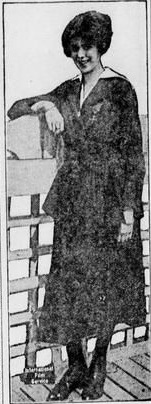 Normally on this page, we recognize the pioneers of wireless communications who facilitated the development of radio. We don’t normally recognize people who smashed radio equipment with an ax. But we make an exception in the case of a forgotten heroine of the First World War, Mlle. Marie Louise Gombier, a Belgian girl who bravely did her part to free her country from its German invaders.
Normally on this page, we recognize the pioneers of wireless communications who facilitated the development of radio. We don’t normally recognize people who smashed radio equipment with an ax. But we make an exception in the case of a forgotten heroine of the First World War, Mlle. Marie Louise Gombier, a Belgian girl who bravely did her part to free her country from its German invaders.
![]()


